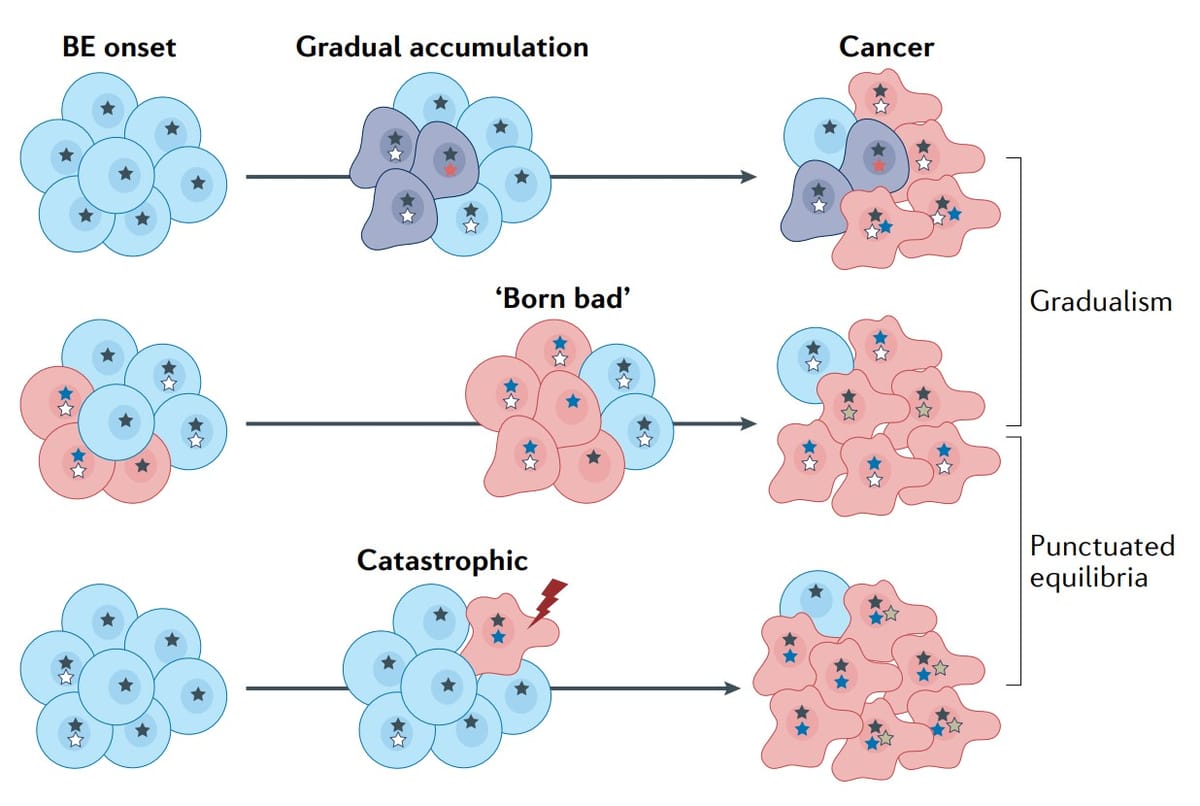Evolution of esosphageal adenocarcinoma and implications for screening and surveillance
This nice review updates the molecular/genomic changes leading to esophageal adenocarcinoma and makes the link to more effective screening and treatment approaches.

Nat Rev Cancer. 2021 Nov;21(11):731-741. doi: 10.1038/s41568-021-00400-x. Epub 2021 Sep 20.
Evolution and progression of Barrett's oesophagus to oesophageal cancer
Sarah Killcoyne 1 2, Rebecca C Fitzgerald 3
PMID: 34545238 DOI: 10.1038/s41568-021-00400-x
Abstract
Cancer cells are shaped through an evolutionary process of DNA mutation, cell selection and population expansion. Early steps in this process are driven by a set of mutated driver genes and structural alterations to the genome through copy number gains or losses. Oesophageal adenocarcinoma (EAC) and the pre-invasive tissue, Barrett's oesophagus (BE), provide an ideal example in which to observe and study this evolution. BE displays early genomic instability, specifically in copy number changes that may later be observed in EAC. Furthermore, these early changes result in patterns of progression (that is, 'born bad', gradual or catastrophic) that may help to describe the evolution of EAC. As only a small proportion of patients with BE will go on to develop cancer, a better understanding of these patterns and the resulting genomic changes should improve early detection in EAC and may provide clues for the evolution of cancer more broadly.




